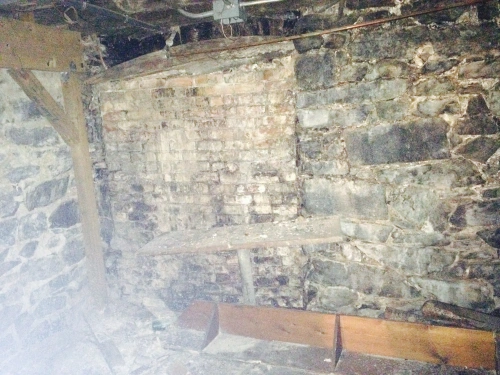Lincoln's Counterfeiting Gang
** March 2025 Update: My book is scheduled for publication on August 18th, 2025!** Full links for purchase will be posted ASAP. Thanks for your patience!
Hello readers!
My apologies for not posting for several months, I have been writing a book on Monroe, WI’s counterfeiting history. If you’ve been reading my work for a while, you’ll be aware of some of this history from Fake $500 Bills in Civil War Wisconsin and The Wild Midwest.
What my new book adds is the federal dimension to Monroe’s “Bonelatta Gang”. I cover how Lincoln’s criminal network helped him finance the war and how, after the war, this gang took over Chicago politics via a meat packing monopoly and prostitution, eventually giving birth to characters like Al Capone. Names that feature prominently are Potter Palmer, Marshall Field, Phillip Danforth Armour, Ulysses Grant and William Jennings Bryan.
Some of those names you’ll already be familiar with from my work covering the intersection between the intelligence community and early film in Chicago. That’s not an accident.
I will provide full details when books hit the shelves, watch this space!
While writing, I stumbled on something of a “White Elephant”: the synergy between 19th century organized crime and subterranean urban passageways. This topic does not feature in my book, but is such an interesting tidbit that I’ll share it now.
Readers may be aware that under Monroe, WI’s historic Courthouse Square, the town center for most of Monroe’s history, are a network of stone passageways. These passageways connect the basements of all the buildings lining the Square and possibly a wider tunnel network extending west and south (toward the Pecatonica River and Illinois border).
Theoretically, you could enter Arabut Ludlow’s bank and exit from any of the saloons or hotels on the thoroughfare, for example. This subterranean system also extends under the streets beyond the Square, but nobody knows exactly how far and there are no plans to investigate them. I am told that the basement of the Goetz Theater, of the SE corner of the Square, is part of this system.
Here is a picture of part of these tunnels from the South Central Wisconsin Archer’s range, off the northeast corner of the Square:
Similar tunnel construction is visible in the basement of the Antique Mall at the Square’s NW corner.
These passages predate some of the buildings which now rest on top of them. I’ve yet to come across hard dates for tunnel-construction, but some are probably as old as the Square itself. Monroe began to develop a commercial heart in the 1850s, when its mining economy was ending.
Monroe started as a rough mining community: prospectors from across the world came looking for lead deposits. Monroe was never as prosperous in this regard as “New Diggings” in Layfayette County or Galena, IL, however men like Almira Humes’ brothers were drawn here for its lead. By 1850 the strongest veins had been tapped and the economy turned to farming… and organized crime.
Strangely enough, subterranean urban tunnels play an interesting role in organized crime in the nineteenth century American West. Ogden, UT is another city where such tunnels criss-cross the historic business center. These passageways once connected brothels, saloons and bars.
"If you were selling whiskey illegally in the end building, you could get it over to my building in a matter of minutes," said Leeuwen.
Like Monroe, Ogden was once a rough place with its own indigenous organized crime network: rich “businessmen” who operated with the protection of City Hall.
Larry Baird owns the shop [Making Scents]. He has two sealed entrances in his basement. One goes towards Electric Alley behind 25th Street, but the other appears to go east.
"You can see it's cemented in?" said Baird. "I believe it's cemented because it does go to the federal building."
Making Scents is on a corner, and that cemented tunnel entrance doesn't appear to connect to a business, but instead looks as if it leads underneath the street. Baird also said he recently spoke with an 82-year-old former police officer who's actually been in the tunnels.
"One of his jobs was that he had to help pull out the bodies that were in the tunnels," said Baird. "He said he could walk from Washington to Wall and never be seen."
Electric Alley was the haunt of prostitutes ran by Belle London, Ogden’s most famous madame who operated with the protection of Mayor John S. Bransford. Bransford represented the pro-Federal “American” interests who by 1900 found common ground with Brigham Young’s successors. Belle’s “husband” came to the Utah Territory with Lincoln’s pet railways, as did Bransford’s political forebears.
One of Ogden, UT’s bricked-in subterranean tunnels, courtesy of Jackies World Travel. Check out her link, she has many more images.
For more information on Monroe, WI’s historical connections with the Latter Day Saints, see my posts on this topic, particularly The Monroe Youngs and the Mormon Youngs.
The tunnels don’t end at the Rockies, however. Seattle, Washington’s “Pioneer Square”, settled in the 1850s, also has a network of notorious tunnels. This network is collectively called the “Seattle Underground” and housed vice establishments, as did Portland, Oregon’s “Shanghai Tunnels”.
The history of these rabbit warrens is usually not acknowledged, or at least not celebrated, by the local powers-that-be. That’s hardly surprising given the typical synergies between 19th century city governments and organized crime. However, they remain a very tangible reminder of the way urban centers really worked after the Civil War and up until the reform movements of the 1910s.








